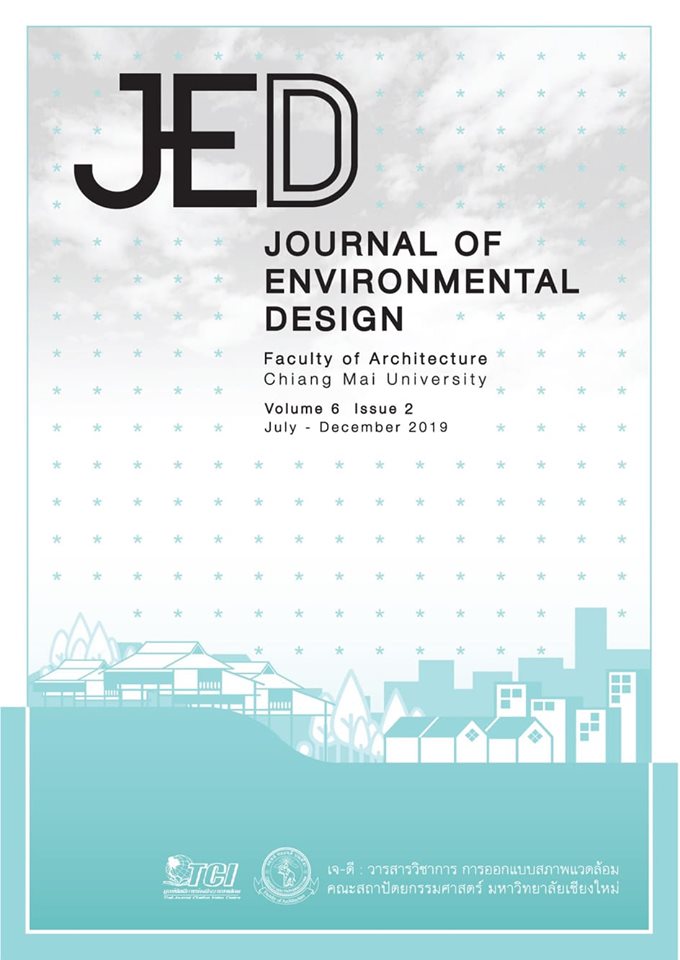Chaang-moob vihara in Phayao and nearby area of Xaignabouli province, Lao People’s Democratic Republic
Keywords:
Chang-moob, vihara, wat, Phayao, XaignabouliAbstract
This research aims to study shapes, plans and space use of the vihara in Phayao province and nearby area of Xaignabouli province, Lao people’s democratic republic. The qualitative research methodology has been used in this study by in-depth study of 24 Chaang-moob shape viharas in Phayao and 19 in Xaignabouli. The processes of fieldwork include vihara plan sketching, taking an interior and exterior photo of vihara. Moreover, there is interviewing about community settlement, the village main ethnic, establishing and restoration of vihara and area using plan. The result of study indicated that the similarities of characteristics between viharas in Phayao and vihara in Xaignabouli are roof shape, plan and area usage. These characteristics have been determined by Tai Lue and Tai Yaun who are main ethnics of both area and have similar belief and ceremony in Buddhism. Furthermore, Tai Lue and Tai Yaun people in Phayao and Xaignabouli are relatives or had a connection for a long time before nowadays boundary between Thailand and Lao People’s Democratic Republic. Consequently, these linkage identity represent the long cultural relationship of them, in addition, this topic will cause cooperation of cultural study and tourism in the future.
References
Herskovits, M. J. (1948). Man and his works: the science of cultural anthropology. New York: Alfred A. Knopf.
Linton, R. (1945). The science of man in the world crisis. New York: Columbia University Press.
Mekboonsonglap, S. (2012). Rubbab wihan nai changwat Phayao. (In Thai) [Patterns of vihara in Phayao province] (Master’s thesis). Chiang Mai: Chiang Mai University.
Ngaorangsi, C. (2001). Karn sueksa sathapattayakam phuen thin Phayao koranee sueksa arkhan praphet wat. (In Thai) [Study of Phayao local architecture case study of temple building]. Phitsanulok: Naresuan University.
Samakkaan, S. (1995). Karn plianplaeng tang wattanatham kub karn pattanakarn khong sangkhom. (In Thai) [Cultural change and social development]. Bangkok: NIDA Consulting Center.
Sirivejchapan, S. & Theeratanont, L. (1989). Sathapatayakam Phayao lae Nan. (In Thai) [Architecture of Phayao and Nan]. Chiang Mai: Social Research Institute, Chiang Mai University.
Vellinga, M. (2007). Anthropology and the materiality of architecture. American Ethnologist,
34 (4), 756-766.
Waterson, R. (2014). The living house: an anthropology of architecture in South-East Asia. Singapore: Tuttle Publishing.



